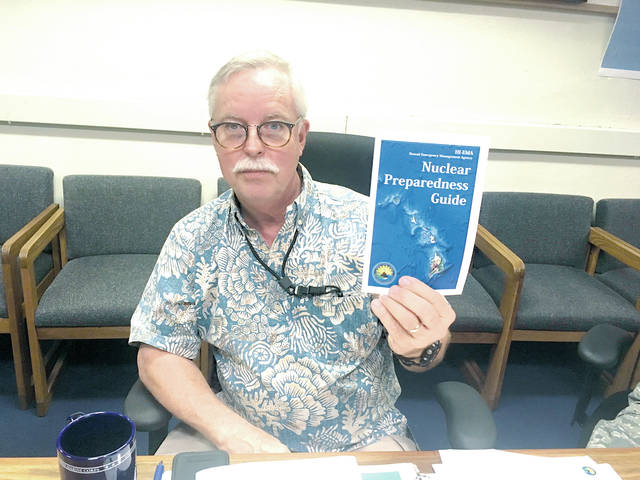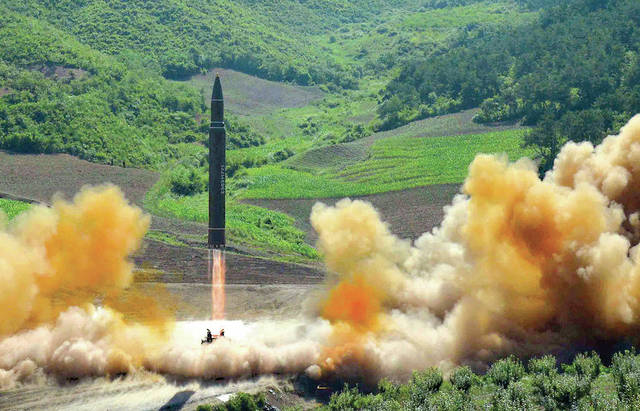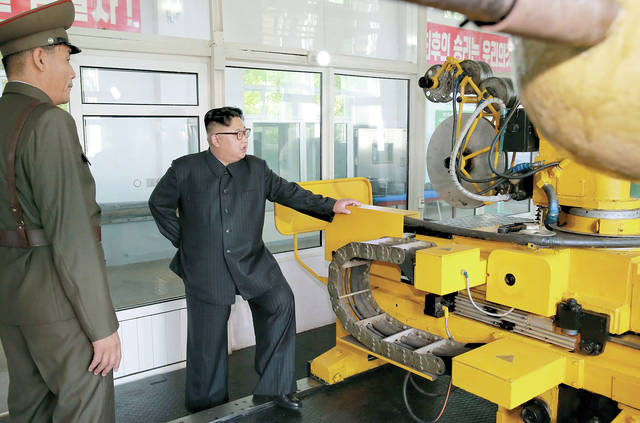HILO — State civil defense officials say they are prepared to add air raid sirens to monthly exercises as early as Nov. 1, but will meet with mayors before setting a date. ADVERTISING HILO — State civil defense officials say
HILO — State civil defense officials say they are prepared to add air raid sirens to monthly exercises as early as Nov. 1, but will meet with mayors before setting a date.
The test would be the first time such siren tones have been used in Hawaii since the Cold War. They are being resurrected in the event North Korea targets the Aloha State with a nuclear missile.
Toby Clairmont, Hawaii Emergency Management Agency executive officer, said those meetings will occur over the next month or so, with one on Kauai this week. He said they were scheduling a date with Mayor Harry Kim for September.
“We want to go through the whole plan with them again,” he said.
State officials a month ago announced plans to try the siren sometime in November in response to North Korea’s ongoing missile and nuclear tests. An attack is considered unlikely, but Clairmont said the state wants residents to be able to recognize the warning to give them a chance to find shelter.
“We can save thousands of lives with 10 minutes of well-used time,” he said.
While HEMA is prepared to start the tests Nov. 1, it could occur in December instead.
“We’re looking at later,” said agency spokeswoman Arlina Agbayani. “If not November, then next month.”
Clairmont acknowledged the test could be pushed back.
“We’ll wait until we talk with all the mayors” before setting a date, he said. “… We want to answer the questions they have.”
Existing sirens are already capable of the alert.
But, unlike the “attention alert” tone most commonly used to warn of potential tsunamis, this alert would be triggered from Oahu, rather than left to each county, Clairmont said.
“The only thing we’re changing is the ability to transmit one signal,” he said. “We don’t have any time. We have 2 minutes until we know (a missile was launched) until we get the sirens going. We can’t call each county and say, ‘Turn on your siren.’”
If such a launch was detected, officials also would issue radio, television and phone alerts, Clairmont said.
According to a recent New York Times article, experts believe it’s possible the communist country is able to hit Hawaii or the U.S. mainland with a missile if fighting breaks out, but it’s not clear if the bomb would survive re-entry into the atmosphere.
It’s believed that its existing nuclear bombs are as powerful as the one dropped on Hiroshima, which killed 70,000 people during the initial blast, or slightly more powerful, the article said.
Even if North Korea launched a missile at Honolulu, Clairmont said it’s not clear that it would be able to hit its target. If it did, the threat to the neighbor islands would be nuclear fallout, though Hawaii Island might be spared, he said.
“What we’re worrying about on the neighbor islands is having no food or water in about a week,” Clairmont said, if Honolulu Harbor is destroyed.
Residents should be prepared to shelter in their homes for up to two weeks, he said.
Email Tom Callis at tcallis@hawaiitribune-herald.com.





